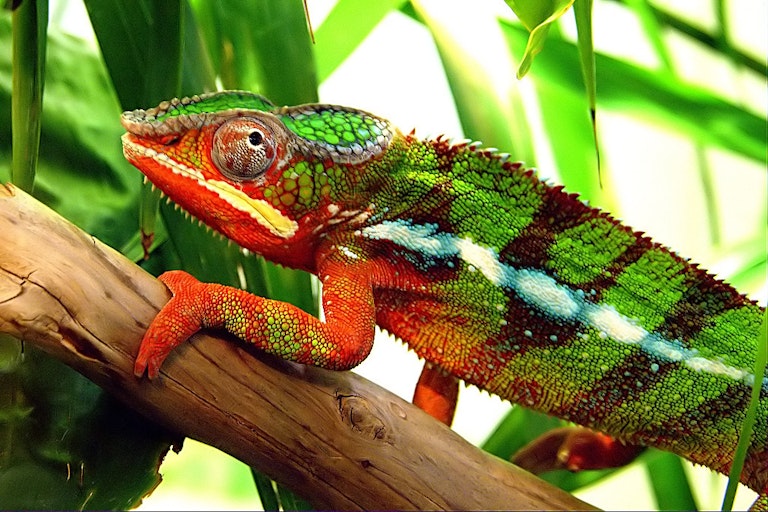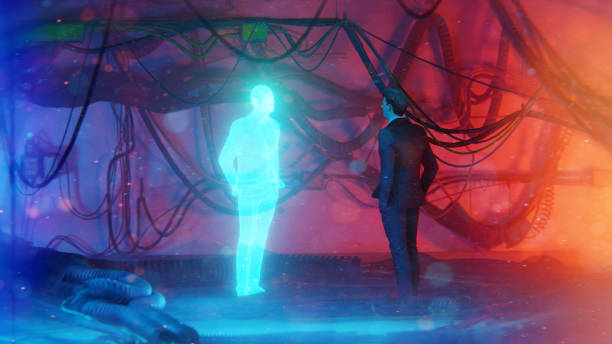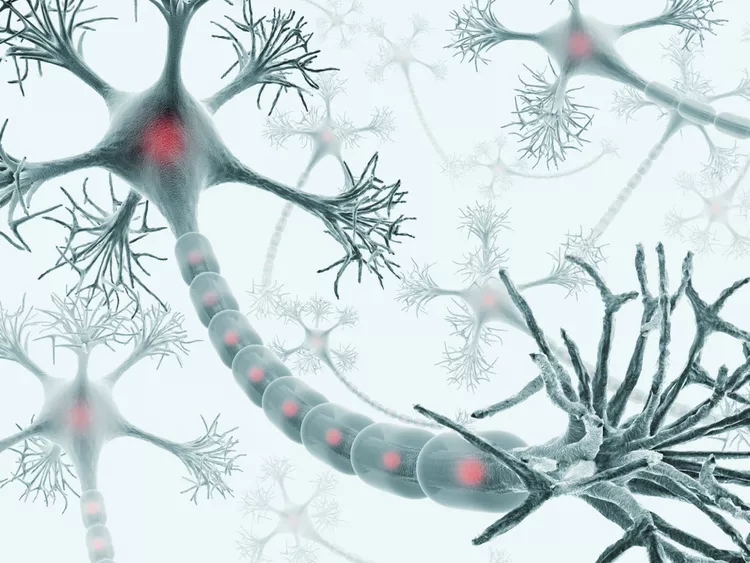The natural world is a masterpiece of innovation. Over billions of years, life on Earth has been sculpted by evolution, giving rise to an endless variety of forms and strategies to survive. Every creature alive today carries the story of adaptation within its very being—a record of how its ancestors responded to the challenges of their environment.
From deserts to oceans, from mountain peaks to the deepest caves, animals have found astonishing ways to endure, thrive, and sometimes even outwit the forces of nature. Some have developed physical features that defy belief, while others rely on extraordinary behaviors or internal systems that stretch the imagination.
In this article, we will journey through 20 of the most incredible adaptations in the animal kingdom—examples that showcase both the creativity of evolution and the resilience of life itself. Each adaptation tells us something profound about survival and about the intricate relationship between living beings and the world they inhabit.
1. The Chameleon’s Color-Changing Skin
Few creatures capture our imagination quite like the chameleon. Famous for its ability to change color, this adaptation is far more complex than camouflage alone. Specialized cells in their skin, called chromatophores and iridophores, allow chameleons to manipulate pigments and reflect light differently.
They shift shades not only to blend into their surroundings but also to regulate body temperature and to communicate with others. A male may flash brighter colors to assert dominance, while a female may change hues to signal receptiveness or rejection.
This remarkable adaptation turns the chameleon into a living canvas, using biology as both shield and language.
2. The Archerfish’s Water “Arrows”
In the mangrove swamps of Southeast Asia, the archerfish hunts in an unusual way: by shooting jets of water from its mouth to knock insects out of the air.
What makes this adaptation so astonishing is the fish’s precision. Archerfish can calculate the distortion caused by light bending through water and air—something even humans struggle with. They adjust their spitting angle accordingly, striking prey with unerring accuracy.
This adaptation showcases how evolution can equip animals not just with physical tools, but with the mental processing power to exploit them.
3. The Electric Eel’s Shocking Power
The electric eel of the Amazon basin is less an eel and more a living battery. It can generate electric shocks up to 600 volts—enough to stun prey, deter predators, and even navigate murky waters through electrolocation.
Specialized cells called electrocytes line the eel’s body, working like biological batteries. When triggered, these cells discharge simultaneously, creating a powerful current.
This adaptation transforms the eel into both predator and weapon, making it one of nature’s most electrifying marvels.
4. The Giraffe’s Towering Neck
The giraffe’s neck, stretching up to six feet long, is one of evolution’s most iconic adaptations. It allows these gentle giants to reach treetop leaves that few other herbivores can access, reducing competition for food.
But the neck poses a biological puzzle: how does a giraffe pump blood all the way to its brain? The answer lies in an exceptionally strong heart and a complex system of valves that regulate blood pressure, preventing fainting when it lowers its head to drink.
This adaptation is not just about height—it’s about an entire circulatory system redesigned for survival.
5. The Cuttlefish’s Mastery of Camouflage
Cuttlefish are masters of disguise, able to alter not only their color but also the texture of their skin. Specialized cells, including chromatophores, iridophores, and papillae, allow them to mimic rocks, sand, coral, or even other animals.
What’s more, they can perform this feat in mere seconds, blending seamlessly into their environment. This adaptation protects them from predators while also helping them ambush prey.
Their camouflage skills are so advanced that researchers study cuttlefish to inspire new materials and military technologies.
6. The Desert Camel’s Survival Toolkit
Life in the desert is harsh, but camels have perfected survival through a suite of remarkable adaptations. Their humps store fat, which can be metabolized for energy and water when resources are scarce.
They can withstand dehydration levels that would kill most animals, and their bodies rehydrate rapidly when water becomes available. Long eyelashes, closing nostrils, and tough lips allow them to handle sandstorms and thorny vegetation.
The camel’s entire physiology is a tribute to endurance, built for survival in one of the most unforgiving habitats on Earth.
7. The Pistol Shrimp’s Sonic Weapon
Tiny but mighty, the pistol shrimp has one of the most powerful weapons in the animal kingdom: a snapping claw that shoots out a bubble at nearly 60 miles per hour.
When the bubble collapses, it generates a shockwave loud enough to stun or kill small prey. For a moment, the temperature inside the bubble can reach that of the sun’s surface.
This adaptation makes the pistol shrimp one of the ocean’s most formidable predators, despite its small size.
8. The Penguin’s Cold-Weather Armor
Penguins thrive in some of the coldest environments on Earth, thanks to adaptations that keep them warm and efficient. Their feathers are densely packed and layered with waterproof oils, while a thick layer of fat provides insulation.
They also huddle together in massive groups to share body heat, reducing energy loss during brutal Antarctic winters.
Penguins transform freezing conditions into a livable environment, embodying cooperation and resilience in their survival strategy.
9. The Leafcutter Ant’s Farming Society
Leafcutter ants are tiny farmers. They cut leaves not to eat directly but to cultivate underground fungal gardens. The ants feed the fungus with chewed plant matter, and in return, the fungus produces food the ants can digest.
This symbiotic farming system rivals human agriculture in complexity. Different castes of ants take on specialized roles, from cutting leaves to tending fungi to defending the colony.
This adaptation highlights how evolution can foster social cooperation as a survival strategy.
10. The Naked Mole Rat’s Unusual Physiology
The naked mole rat, a hairless rodent living underground in East Africa, defies biological norms. It is almost completely resistant to cancer, feels little pain, and can survive with very little oxygen.
Its unique physiology allows it to live in crowded tunnels where oxygen levels drop dangerously low. Mole rats also live in eusocial colonies, much like ants and bees, with a single breeding queen and specialized worker castes.
This adaptation shows how mammals, too, can evolve extreme survival strategies.
11. The Octopus’s Problem-Solving Mind
Octopuses are renowned for their intelligence. With large, complex brains and highly developed nervous systems, they can solve puzzles, escape enclosures, and even use tools.
Their flexible, boneless bodies allow them to squeeze through tiny openings, while their arms can act independently, exploring and manipulating objects.
This blend of physical and cognitive adaptations makes the octopus one of the most extraordinary creatures in the ocean.
12. The Kangaroo’s Energy-Efficient Hop
The kangaroo’s bounding hop is more than just a quirky movement—it’s an adaptation for efficiency. Specialized tendons in their legs act like springs, storing and releasing energy with each jump.
This means kangaroos expend less energy the faster they go, allowing them to cover long distances across Australia’s arid landscapes in search of food and water.
Their hopping is not just unique—it’s one of nature’s most energy-saving locomotion strategies.
13. The Axolotl’s Regenerative Powers
The axolotl, a salamander native to Mexico, is often called the “walking fish.” But its true marvel lies in its ability to regenerate entire body parts.
Unlike most animals, axolotls can regrow limbs, tails, spinal cords, and even parts of their hearts and brains without scarring. Scientists study them to unlock the secrets of tissue regeneration, hoping to apply this knowledge to human medicine.
This adaptation makes the axolotl one of biology’s greatest healers.
14. The Bat’s Echolocation
Bats are the only mammals capable of true flight, but their greatest adaptation is echolocation. By emitting high-frequency calls and listening to the echoes that bounce back, bats can “see” in complete darkness.
This system allows them to hunt insects with incredible precision, navigating complex environments without relying on vision.
Echolocation is a living example of how evolution can reinvent senses to overcome environmental challenges.
15. The Arctic Fox’s Seasonal Disguise
The Arctic fox has one of the most effective camouflage systems in nature. In winter, its fur turns pure white, blending seamlessly with snow. In summer, it shifts to brown or gray, matching tundra rocks and vegetation.
This adaptation not only hides the fox from predators but also helps it stalk prey. Combined with thick fur and a compact body that conserves heat, the Arctic fox is perfectly suited for life at the top of the world.
16. The Sloth’s Slow Lifestyle
At first glance, the sloth seems poorly adapted—slow, awkward, and vulnerable. But its very slowness is its strength.
By moving gradually and blending into the canopy, sloths avoid detection by predators. Their slow metabolism means they can survive on a low-energy diet of tough leaves.
Algae grow on their fur, giving them extra camouflage and even nutrients when they lick it off. The sloth’s adaptation is not speed, but survival through invisibility and efficiency.
17. The Platypus’s Electro-Sensing Bill
The platypus is a creature so strange that early European scientists thought it was a hoax. Yet every odd feature it carries is a remarkable adaptation.
Most extraordinary is its bill, which contains electroreceptors that detect the tiny electrical signals produced by the muscles of prey. This allows the platypus to hunt underwater with eyes, ears, and nostrils closed.
In its own quiet way, the platypus proves that evolution often takes unexpected and astonishing paths.
18. The Star-Nosed Mole’s Super Nose
The star-nosed mole, found in North America, sports one of the strangest faces in the animal kingdom: a nose covered in 22 fleshy appendages.
This bizarre structure is one of the most sensitive touch organs known, packed with over 25,000 sensory receptors. It allows the mole to identify and eat prey in as little as 120 milliseconds—the fastest known eating response among mammals.
This adaptation turns a peculiar appearance into a survival advantage underground.
19. The Wood Frog’s Freeze Tolerance
The wood frog of North America has an adaptation that seems impossible: it can survive being frozen solid.
During winter, its body shuts down, its heart stops beating, and it enters a state of suspended animation. Special proteins and glucose in its cells prevent ice from causing lethal damage.
When spring arrives, the frog thaws and hops away as if nothing happened. This adaptation makes it one of nature’s true resurrectionists.
20. The Dolphin’s Cooperative Hunting
Dolphins are not only intelligent but also masters of teamwork. They use complex cooperative hunting strategies, from herding fish into tight balls to using mud rings as barriers.
Some pods even pass down hunting techniques through generations, a form of cultural transmission once thought unique to humans.
Their adaptation lies not in anatomy, but in behavior—demonstrating how intelligence and social cooperation can be just as powerful as physical traits in survival.
Conclusion
The animal kingdom is a gallery of innovation. From the chameleon’s shifting colors to the wood frog’s frozen slumber, from the electric eel’s shocking defenses to the dolphin’s cultural intelligence, these adaptations reveal the extraordinary ways life finds to persist.
Each adaptation is not random but the result of millions of years of trial and error, shaped by the relentless pressures of survival. They remind us that nature is both practical and imaginative, crafting solutions that range from the efficient to the outright bizarre.
To study these adaptations is to glimpse the brilliance of evolution—and to be humbled by the creativity of life itself.






